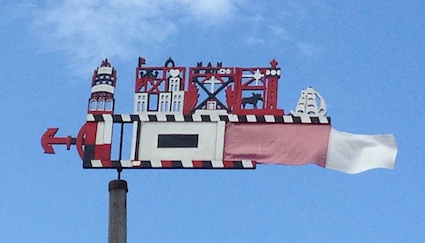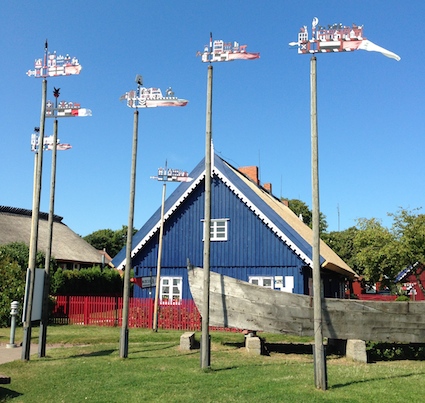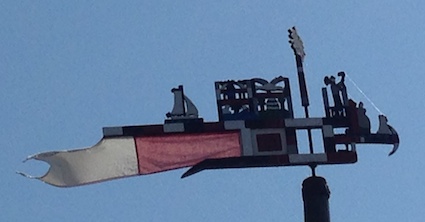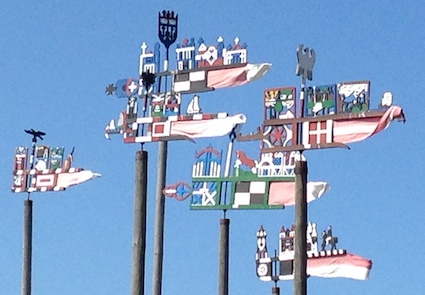
Most weather vanes are basic affairs. They are an arrow which points in the direction of the wind and with the compass directions at the bottom. The designs are usually fairly traditional stuff. All-in-all, my excitement levels about weather vanes has never been particularly high.
My visit to Nida in Lithuania changed my mind. This pretty little village on the Curonian Spit is defined by its weather vanes. They can be seen everywhere and each one is unique and different.

Firstly, I liked the collective displays. Who says you need just one weather vane. If Nida can have lots, then so can a school ground. They can be put up high or kept closer to the ground. There’s pros and cons to both. For an accurate reflection of the wind direction, a weather vane should be mounted on the highest building to avoid eddies and other buildings or features affecting wind direction. However to appreciate intricate decoration and designs, siting them lower makes good sense, even if accuracy is affected. Portable weather vanes enable children to develop practice at aligning them with the compass directions and reading the wind direction in different places thus developing their understanding of microclimatology.

Next, these weather vanes have a history and a purpose to their design. The best information I found online was this blog post. Weather vanes were mounted on every sailing boat permitted to fish in the Curonian Lagoon. They enabled easy identification of each boat and to which village it belonged. Each one, is a standard 2ft long, and 1ft high. The flags on the tail makes them seem longer than this. Originally they were made from tin, but this later changed to wood. The windward side is decorated. The location at the top of the mast reflects the connection between the waters below and the heavens above.

The designs are also symbolic. If you look at the photos below several have a four-square black and white section. This indicates that the boat owner is from one of the villages on the spit, such as Nida. Some designs reflect the view of their village. A church represents faith; an elk symbolises power, etc. Each one carved tells a personal story of the person who created it.

For me, it is the designs and the symbolism which I feel brings identity, culture and a design element into any weather project. Simple weather vanes can be designed by children and placed outside. They remind me slightly of the funky junk art which has the potential to be adapted for such a purpose. I rather like the challenge of getting the vanes to spin easily and to ensure the balance of weight makes the vanes turn into the wind.






























Nida is one of most beautiful placies in Lithuania. If you will come to this country you must to plan al least one day there. During the summer it is not easy to find accomodation and prices are quite high. But if you plan a bit in advance – it is manageble. Not far away from Nida there is another nice village Juodkrantė. You always cross it if you go to Nida. Juodkrantė is worth visiting as well, but just if you have more time…